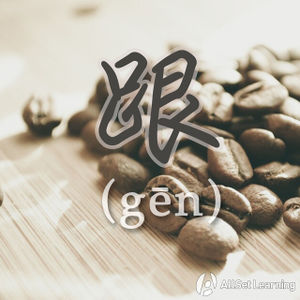Difference between revisions of "Basic comparisons with "yiyang""
| Line 21: | Line 21: | ||
* 我 <em>像</em> 你 <em>一样</em>。<span class="trans">I am like you.</span> | * 我 <em>像</em> 你 <em>一样</em>。<span class="trans">I am like you.</span> | ||
| − | * 他 的 性格<em>像</em> 他 妈妈 <em>一样</em>。<span class="trans"></span> | + | * 他 的 性格<em>像</em> 他 妈妈 <em>一样</em>。<span class="trans">She has the same temper as her mom.</span> |
* 啤酒 <em>和</em> 葡萄酒 <em>一样</em> 吗?<span class="trans">Are beer and wine the same?</span> | * 啤酒 <em>和</em> 葡萄酒 <em>一样</em> 吗?<span class="trans">Are beer and wine the same?</span> | ||
| − | * 这里 的 天气 <em>和</em> 上海 <em>一样</em>。<span class="trans"></span> | + | * 这里 的 天气 <em>和</em> 上海 <em>一样</em>。<span class="trans">The weather here and the weather in Shanghai is the same.</span> |
| − | * 北京 <em>和</em> 上海 <em>一样</em> 吗?<span class="trans"></span> | + | * 北京 <em>和</em> 上海 <em>一样</em> 吗?<span class="trans">Is Beijing and Shanghai alike?</span> |
| − | * 这 句 话 的 意思 <em>和</em> 那 句 <em>一样</em> 吗?<span class="trans"></span> | + | * 这 句 话 的 意思 <em>和</em> 那 句 <em>一样</em> 吗?<span class="trans">Is the meaning of that this sentence and that sentence the same?</span> |
| − | * 这 本 书<em>跟</em> 那 本<em>一样</em>。<span class="trans"></span> | + | * 这 本 书<em>跟</em> 那 本<em>一样</em>。<span class="trans">This book and that book is the same.</span> |
| − | * 你 <em>跟</em> 他 不 <em>一样</em>。<span class="trans"></span> | + | * 你 <em>跟</em> 他 不 <em>一样</em>。<span class="trans">You are not like him.</span> |
| − | * 桔子<em>跟</em> 橙子 <em>一样</em>吗?<span class="trans"></span> | + | * 桔子<em>跟</em> 橙子 <em>一样</em>吗?<span class="trans">Are tangerines and oranges the same?</span> |
* 美国 <em>跟</em> 英国 不 太 <em>一样</em>。<span class="trans">America and England are not too similar.</span> | * 美国 <em>跟</em> 英国 不 太 <em>一样</em>。<span class="trans">America and England are not too similar.</span> | ||
Revision as of 06:47, 1 November 2013
-
Level
-
Similar to
-
Used for
-
Keywords
As well as with 比 and 没有, there is a third way to make basic comparisons: with 一样 (yīyàng).
Rather than expressing that two things differ regarding a particular quality, 一样 is used to express that two things are the same in some way.
Contents
Basic Usage
Structure
The simple structure is used for stating that two things are equal:
Noun 1 + 跟 / 和 / 像+ Noun 2 + 一样
Examples
- 我 像 你 一样。I am like you.
- 他 的 性格像 他 妈妈 一样。She has the same temper as her mom.
- 啤酒 和 葡萄酒 一样 吗?Are beer and wine the same?
- 这里 的 天气 和 上海 一样。The weather here and the weather in Shanghai is the same.
- 北京 和 上海 一样 吗?Is Beijing and Shanghai alike?
- 这 句 话 的 意思 和 那 句 一样 吗?Is the meaning of that this sentence and that sentence the same?
- 这 本 书跟 那 本一样。This book and that book is the same.
- 你 跟 他 不 一样。You are not like him.
- 桔子跟 橙子 一样吗?Are tangerines and oranges the same?
- 美国 跟 英国 不 太 一样。America and England are not too similar.
Another Basic Usage
Structure with Adjective
To add an adjective into the mix, just place it after 一样:
Noun 1 + 跟 / 和 / 像 + Noun 2 + 一样 + Adjective
This describes Noun 1 as being as adjective as Noun 2.
Examples
- 你 跟 我 一样 高。You and me are the same height.
- 他们 和 我们 一样 酷。They and us are equally cool.
- 小狗 像 小猫 一样 可爱。Puppies and kittens are equally cute.
- 他 的 性格像 他 妈妈 一样 差。
- 啤酒 和 葡萄酒 一样 好喝 吗?Are beer and wine the same?
- 这里 的 天气 和 上海 一样 热。
- 北京 和 上海 一样 大 吗?
- 这 本 书 跟 那 本一样 无聊。
- 我 跟 你一样 忙。
- 这 个 房间跟 那 个一样 大。
See also
Sources and further reading
Books
- Chinese: An Essential Grammar, Second Edition (pp. 55) →buy
- Integrated Chinese: Level 1, Part 1 (3rd ed) (pp. 244) →buy
- New Practical Chinese Reader 2 (新实用汉语课本2) (pp. 108) →buy
Websites
- Yale Chinese Usage Dictionary: Usage of 跟 and 比



